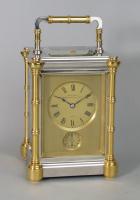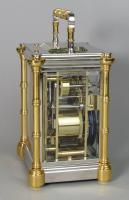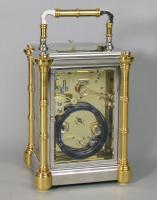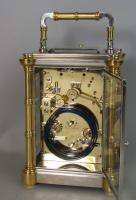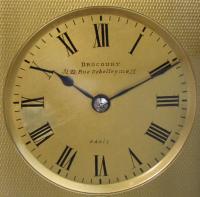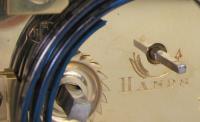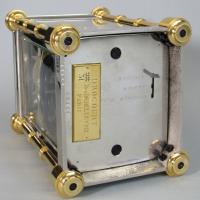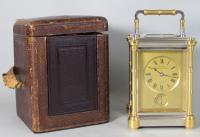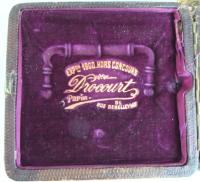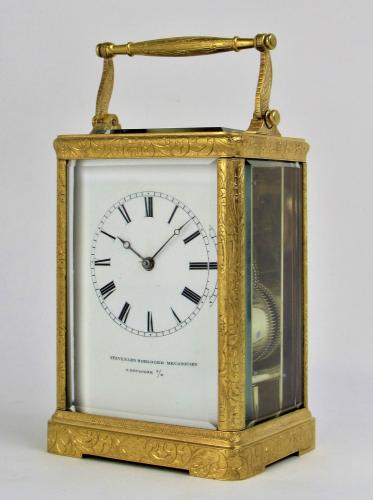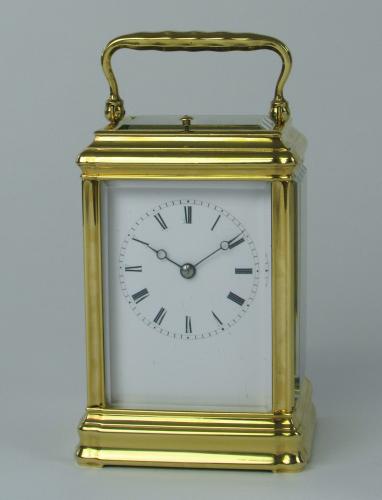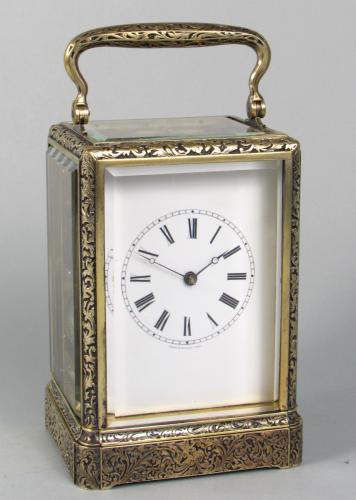
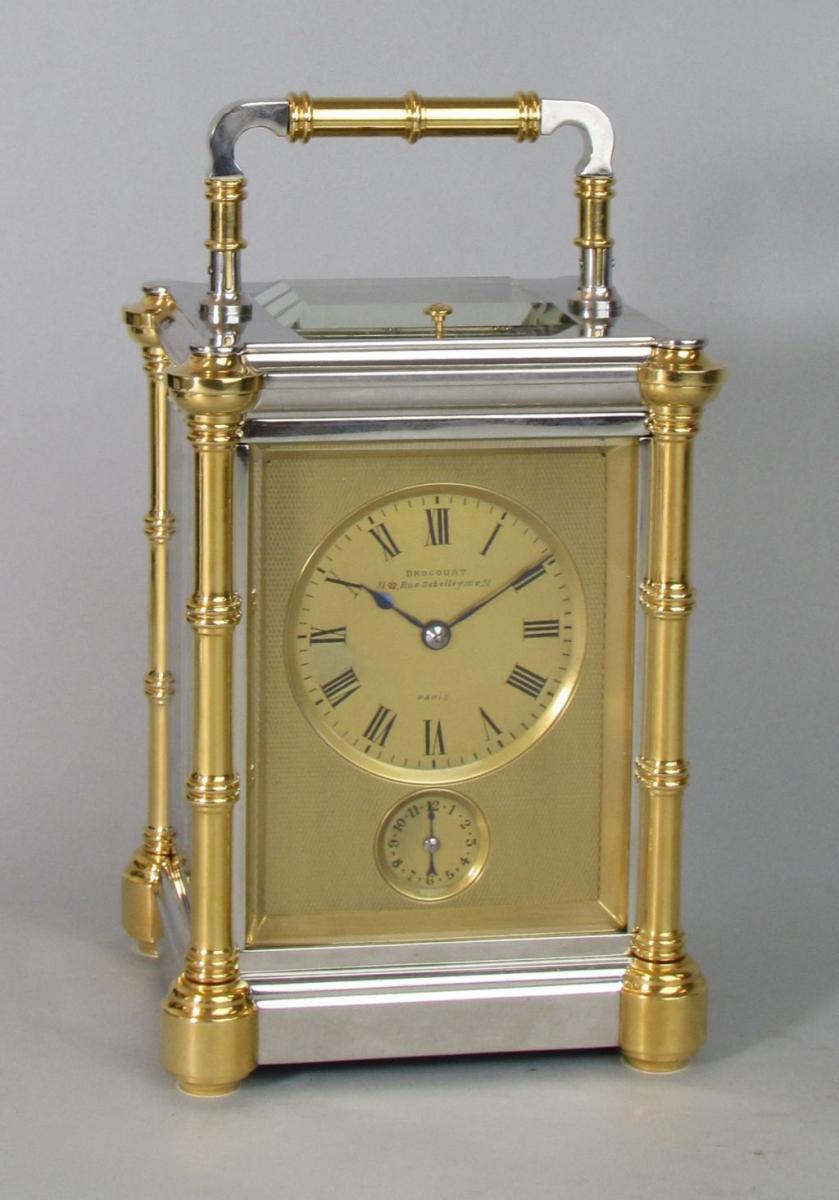
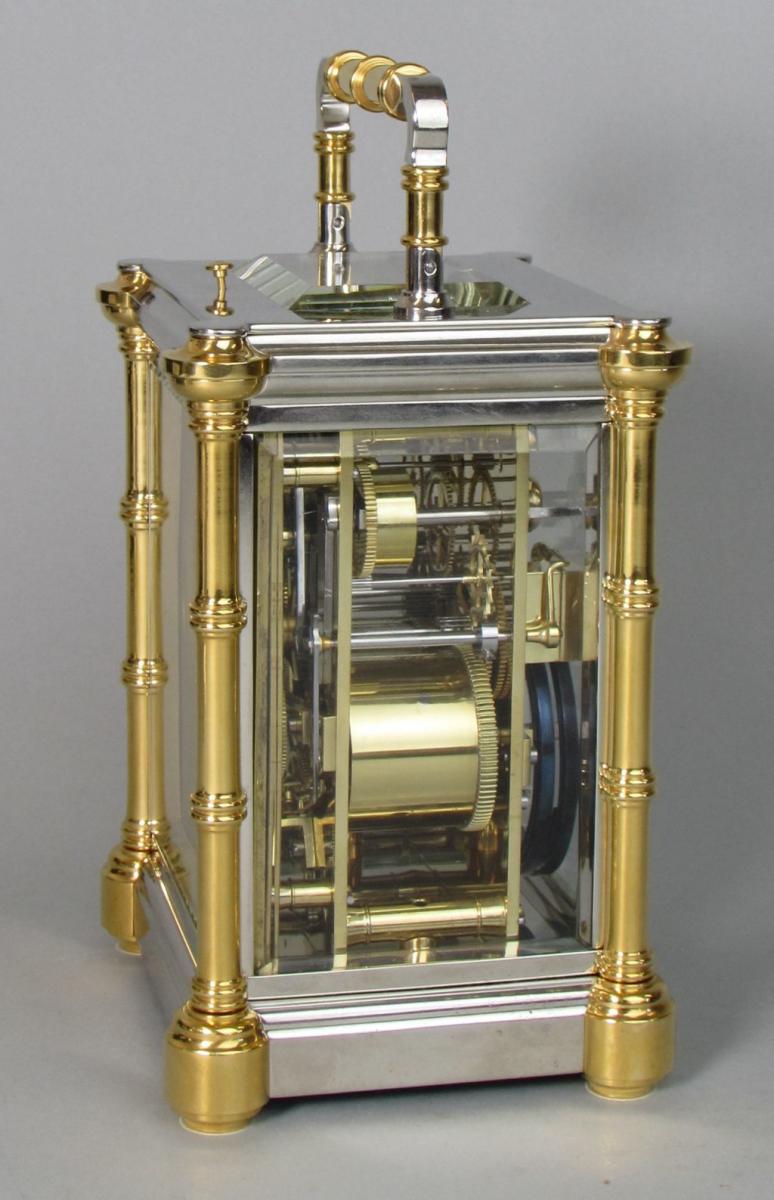
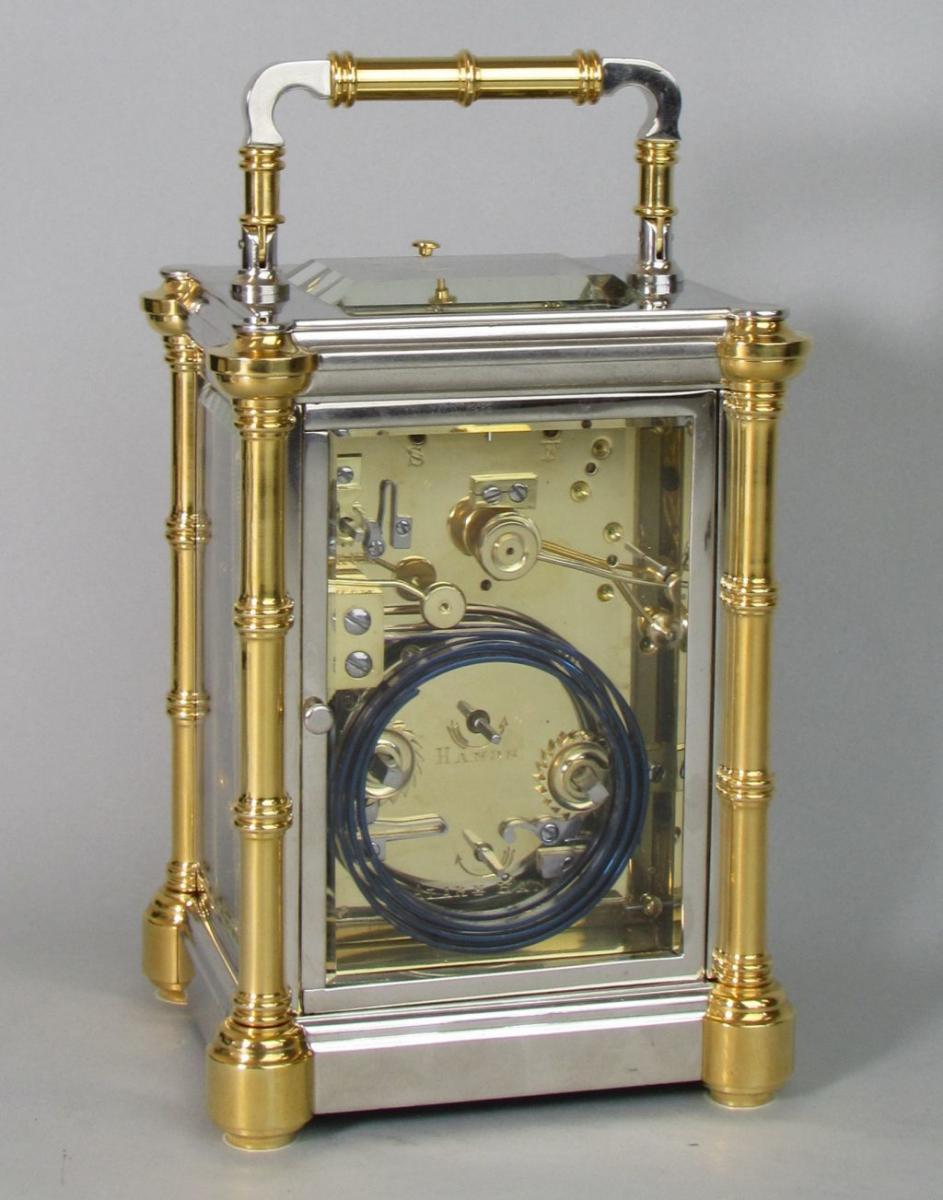
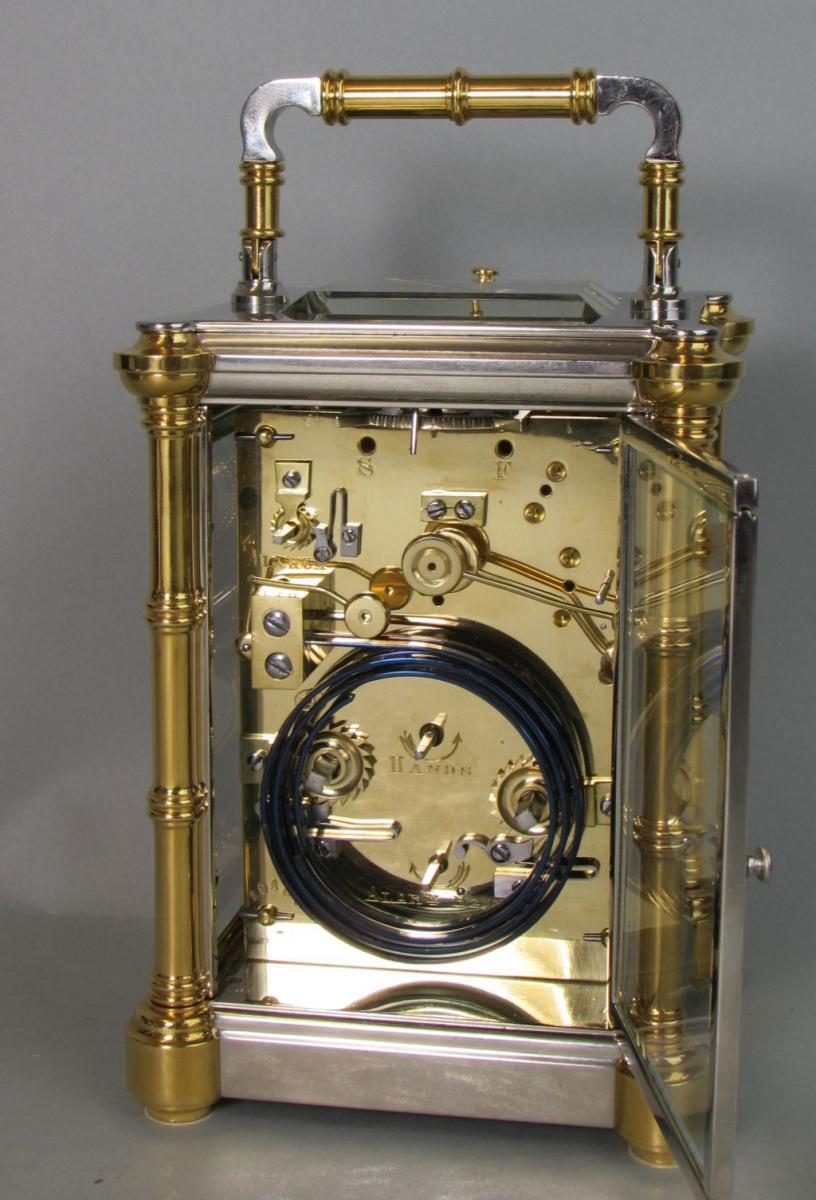
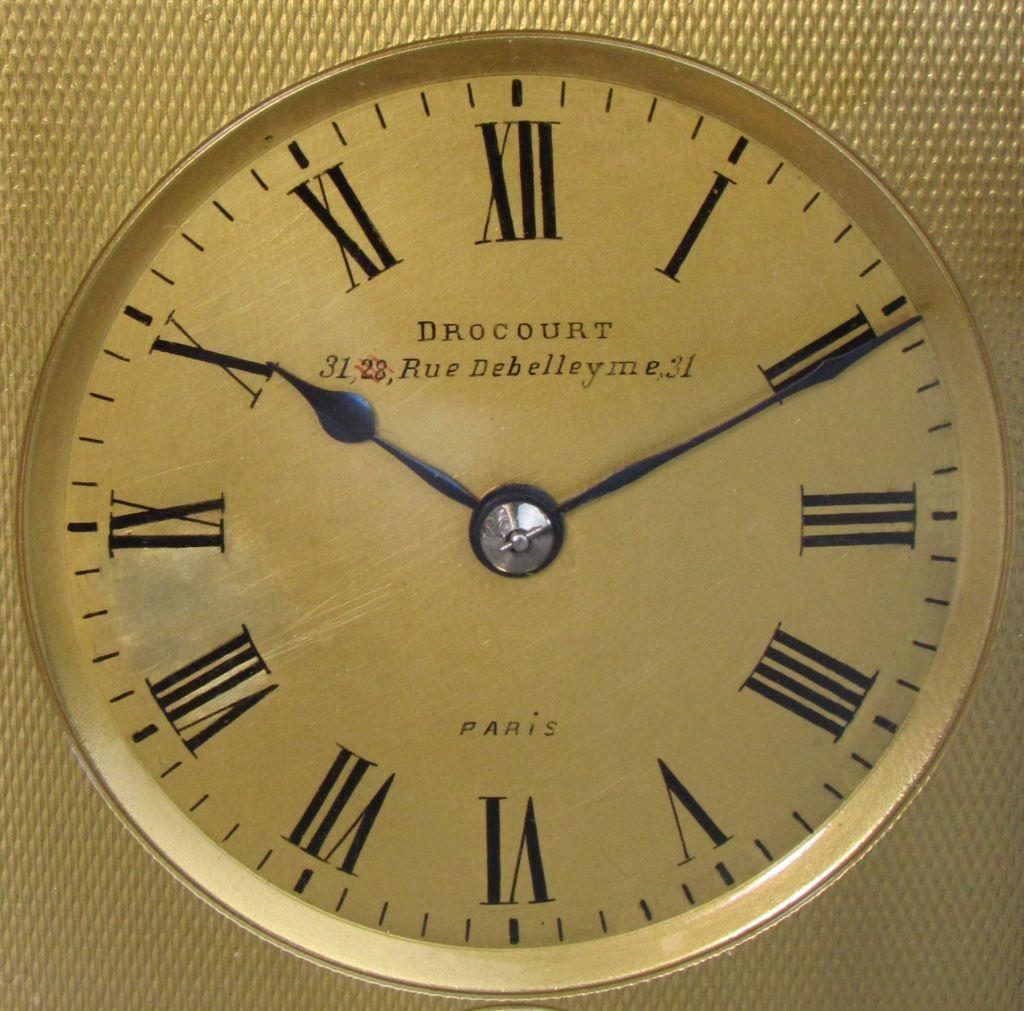
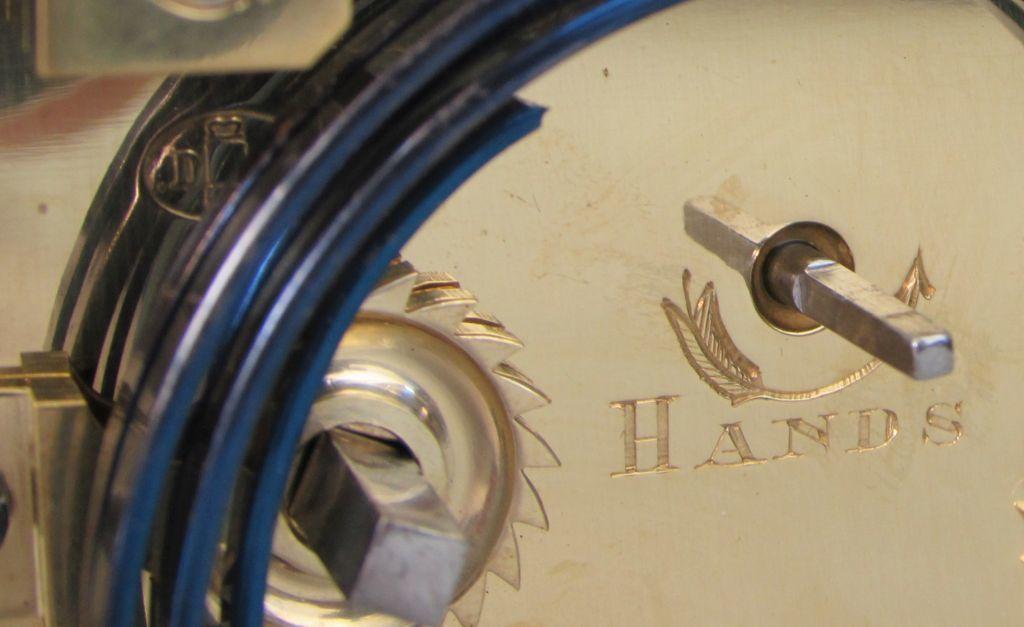
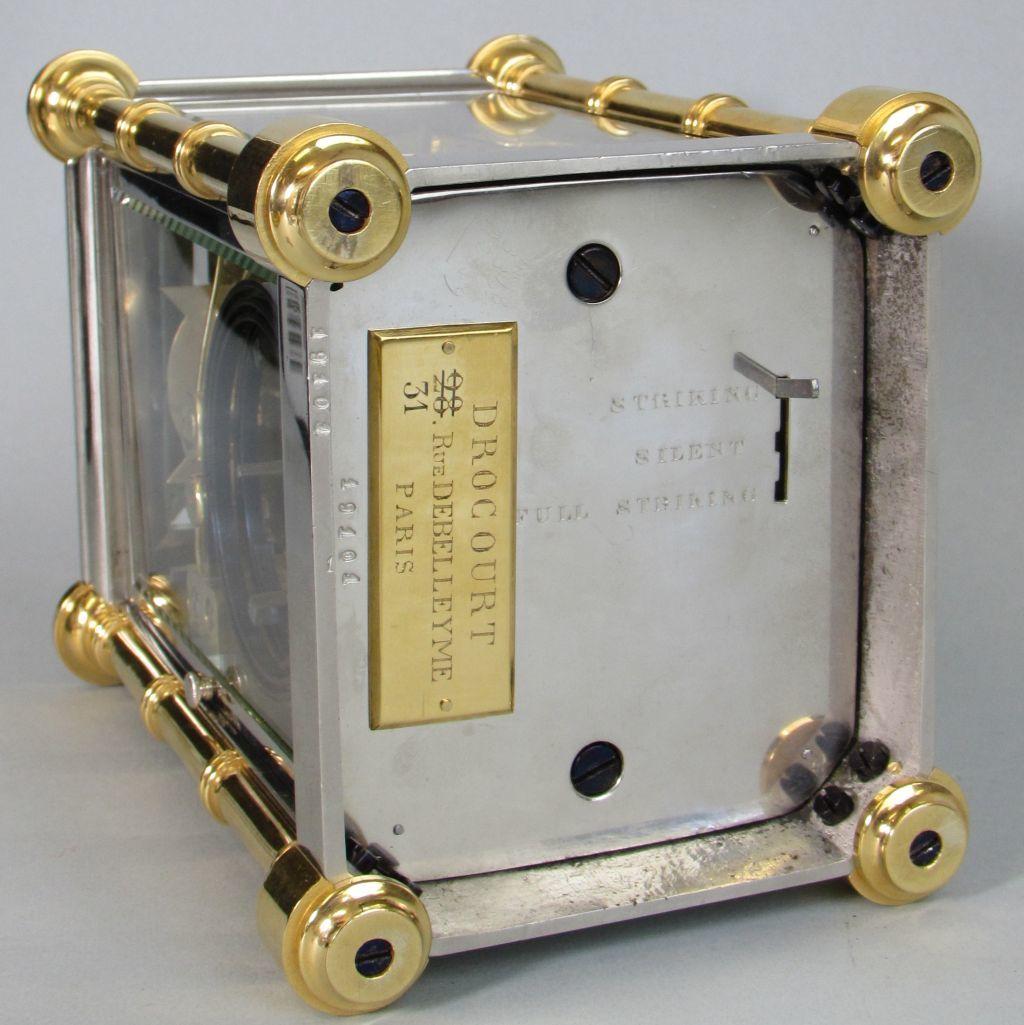
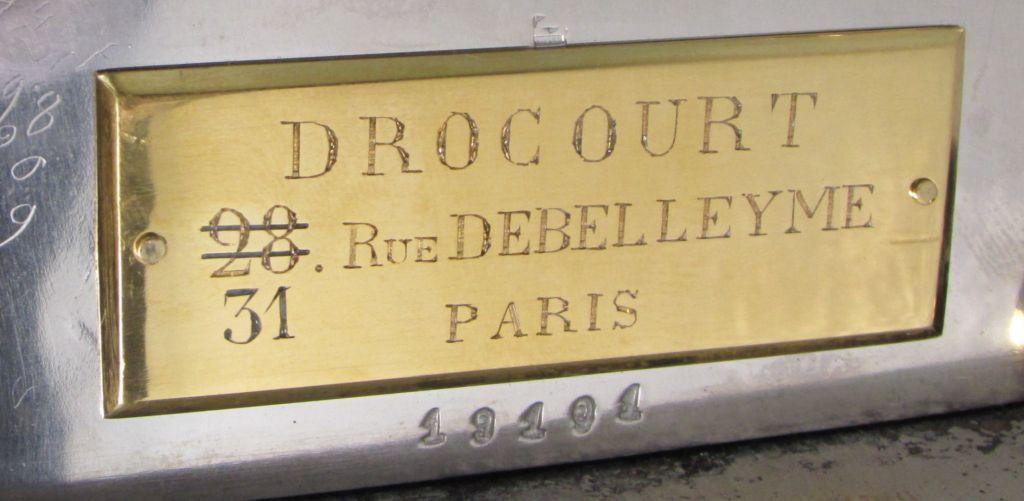
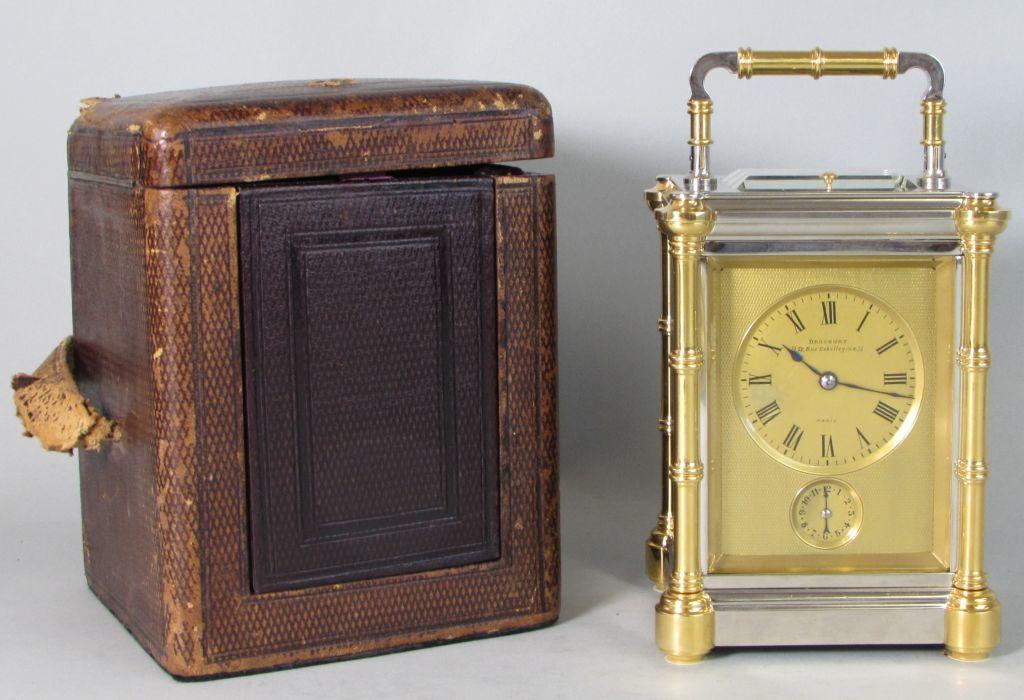
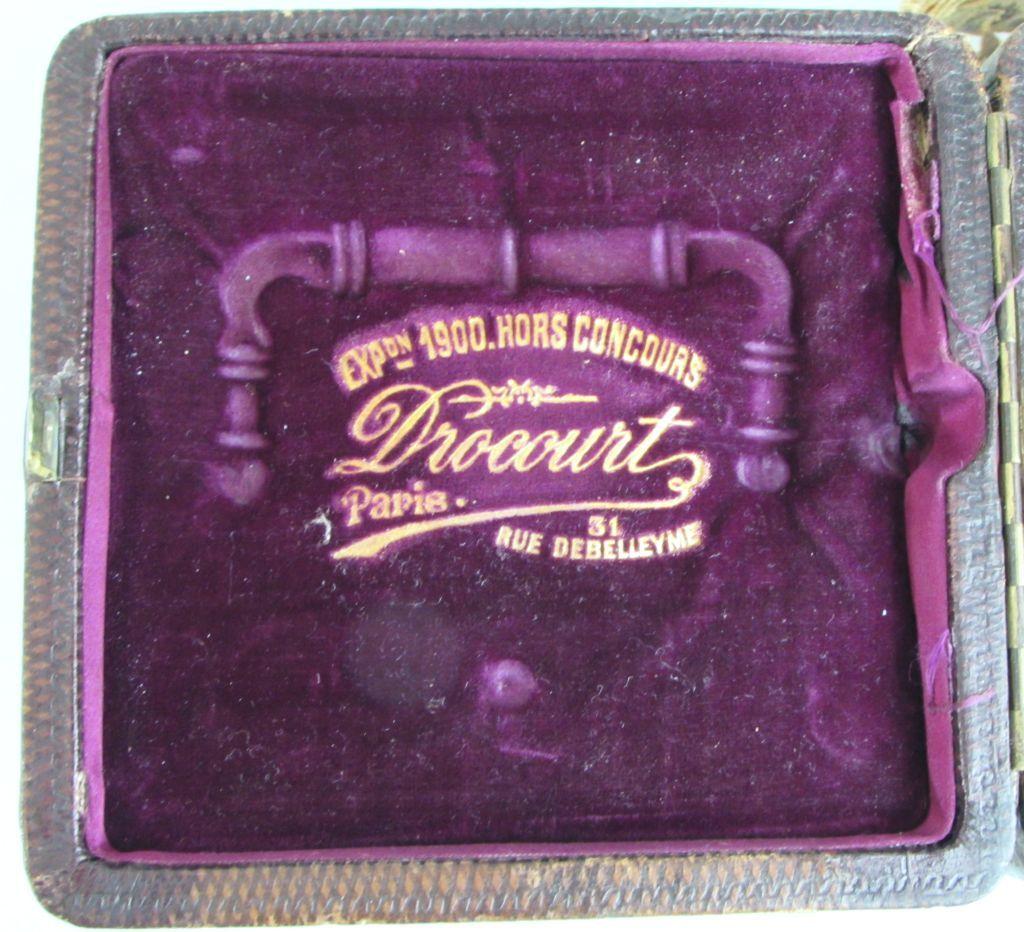
Price
£7500.00This object is eligible for a Certificate of BADA Provenance
The BADA Standard
- Since 1918, BADA has been the leading association for the antiques and fine art trade
- Members are elected for their knowledge, integrity and quality of stock
- Our clients are protected by BADA’s code of conduct
- Our dealers’ membership is reviewed and renewed annually
- Bada.org is a non-profit site: clients deal directly with members and they pay no hidden fees
A grande-sonnerie carriage clock by Drocourt, with interesting features relative to the history of this fine maker.
The eight-day duration movement has a silvered platform lever escapement, and has grande-sonnerie strike in which it strikes the hours and quarters on two gongs, with each being sounded at each quarter. To the underside of the case is a lever allowing for full-striking (grande-sonnerie); striking (petite-sonnerie, with the quarters sounding at each quarter and the hour just on the hour), or silent. The backplate is stamped with the Drocourt trademark along with the serial number 19101, with the gong block stamped F.D. for the gong maker.
The gilded masked dial, with blued steel spade hands, is most interestingly signed, certainly within the context of the history of Drocourt, having black Roman numerals and signed Drocourt, 28, Rue Debelleyme, Paris, with the number 28 struck out and replaced with the number 31, and has an additional 31 at the end to balance out the wording. This being significant as my research now shows that Alfred Drocourt had to leave his long-standing workshops at number 28 prior to 1908 with a move further along the street to much smaller premises at number 31, where he was to stay for just a couple of years.
The silvered and gilded bambu case is also significant in that it has an engraved plaque to the underside with a repeat of the 28, Rue Debelleyme address, and where again the number 28 has been struck through with tramlines and replaced with a well engraved number 31.
The original leather travelling box is embossed within the lid with gilded details showing the address for Drocourt as 31, Rue Debelleyme and referring to the award of the Hors Concours at the Paris Exposition of 1900. Alfred Drocourt was not able to receive an actual exhibitors medal at this exhibition as he was a member of the Classe 96 horological jury.
That this clock was fitted to the travelling box after 1900 is apparent, but the serial number 19101 would suggest a manufacturing date of circa 1890. My research would indicate that in the latter years, certainly from 1900 onwards, Drocourt was utilising unused ‘old stock’ for his finer clocks and finishing them for sale. I have now seen at least five examples where the dating of the actual clocks are some ten or more years after the serial numbers would indicate the movements were first manufactured. That this striking-out of the original street number was not a one-off is indicated by another grande-sonnerie sold by Christies Auctioneers in 1998 as part of the well-known Dr Eugene & Rose Antelis Collection and where Drocourt serial number 34831 is shown to have the 28 removed from the address on the ivory dial, as well as also having it struck through on the engraved plaque to the underside of the base to make the street number replacement in an identical fashion. Another example is serial number 28978 (my stock number 1383) which has the address on the dial as 28, Rue Debelleyme, but is fitted in an original travelling box that has the same embossed detail as shown on this example with the address shown as number 31.
It is possible that the sale of the Drocourt house and workshops in Saint-Nicolas-d’Aliermont in 1904, and from where all the blancs roulants originally came from, severely impacted on the business as I now believe that he had the majority of the less-expensive carriage clocks made elsewhere by this time.
Pierre Drocourt, born 1819, founded the Drocourt clock-making business in Paris in 1853 with his son Alfred, born 1847, taking over in 1872. The blancs roulants, rough movements, were made in Saint-Nicolas-d'Aliermont, a town outside Dieppe, where Drocourt had workshops until their sale in 1904, being premises purchased from Holingue frères in 1875 who had previously supplied Drocourt. The clocks were then finished ready for sale at their workshops at 28 Rue Debelleyme, Paris; previously Rue Limoges.
For further details of Drocourt and Holingue frères see my 2014 Exhibition catalogue: Pierre & Alfred Drocourt: An Exhibition of Carriage Clocks, available via the Extence website.
Dimensions
18.5 cmsCondition report
Fully restored and guaranteedStock number
1417The BADA Standard
- Since 1918, BADA has been the leading association for the antiques and fine art trade
- Members are elected for their knowledge, integrity and quality of stock
- Our clients are protected by BADA’s code of conduct
- Our dealers’ membership is reviewed and renewed annually
- Bada.org is a non-profit site: clients deal directly with members and they pay no hidden fees


